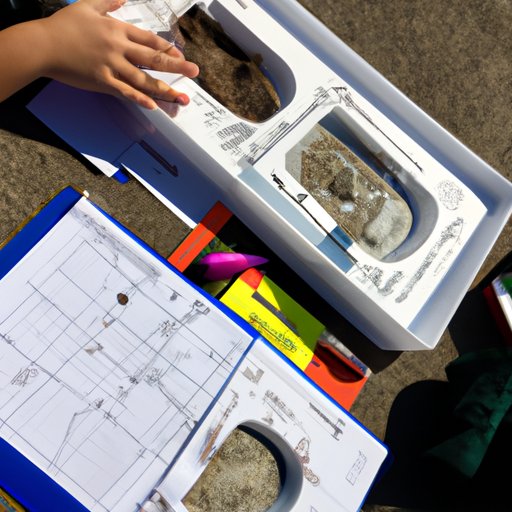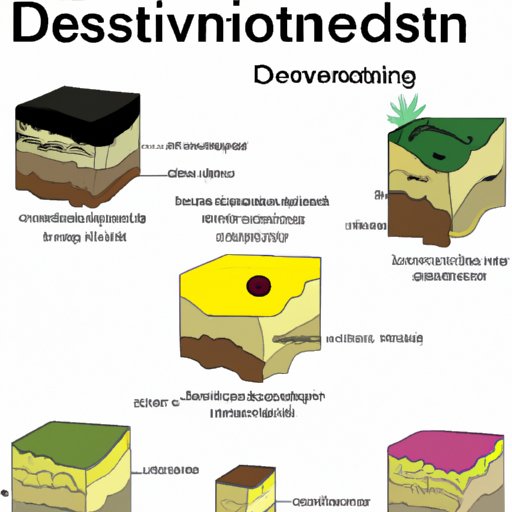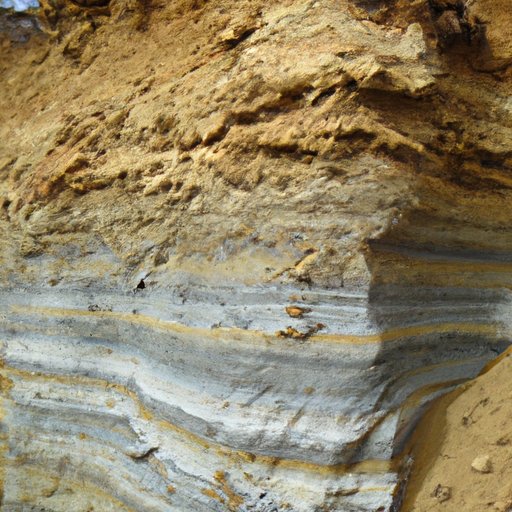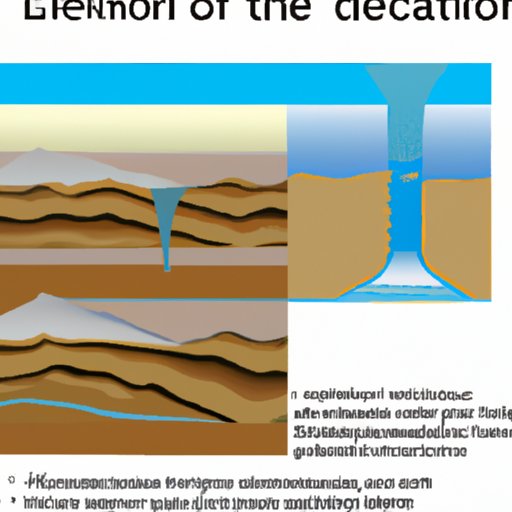Introduction
Deposition is an important process in earth science that involves the transport and deposition of sediment particles. This article will explore the basics of deposition in earth science, as well as its role and impact on the environment. Through a comprehensive guide to deposition in earth science, we will look at how deposition occurs, the factors that influence it, and examples of deposition in action. Finally, we will investigate how deposition influences earth science and its role in geological processes.

Exploring the Basics of Deposition in Earth Science
To understand the role of deposition in earth science, it is important to first define what deposition is. Deposition is the process of laying down or depositing sediment particles from one place to another. This can occur through natural processes such as water or wind erosion, or through human activities such as construction or mining. The sediment particles are then transported and deposited in different environments, such as rivers, lakes, oceans, and deserts.
There are several types of deposition that can occur in earth science. These include fluvial deposition, which is the deposition of sediment by rivers; aeolian deposition, which is the deposition of sediment by wind; glacial deposition, which is the deposition of sediment by glaciers; and marine deposition, which is the deposition of sediment by oceans or seas. Each type of deposition has its own set of effects on the environment and earth science.
The effects of deposition on earth science depend on the type of deposition that occurs. For example, fluvial deposition can cause changes to the landscape and alter the course of a river. Aeolian deposition can create sand dunes and affect air quality. Glacial deposition can create moraines and affect the climate. Marine deposition can create seafloor features and affect ocean currents.

A Comprehensive Guide to Deposition in Earth Science
Now that we have explored the basics of deposition in earth science, let’s take a closer look at how deposition occurs. In general, deposition is the result of two main processes: erosion and transportation. Erosion is the process of wearing away or breaking down material, while transportation is the process of moving material from one place to another. Both of these processes work together to create the conditions necessary for deposition to occur.
The factors that influence deposition in earth science include the type of sediment particles being transported, the energy of the transporting medium, and the speed of the transporting medium. Different types of sediment particles, such as sand, silt, and clay, have different weights and sizes and will be affected differently by the transporting medium. The energy of the transporting medium, such as wind or water, will also affect the rate of deposition. Finally, the speed of the transporting medium will determine the amount of time it takes for the sediment particles to be deposited.
There are several examples of deposition in action in earth science. One example is the formation of beaches due to the deposition of sediment particles from the ocean. Another example is the formation of deltas due to the deposition of sediment particles from rivers. Finally, the deposition of sediment particles from glaciers can create moraines and other glacial features.

The Role of Deposition in Earth Science: A Closer Look
Now that we have looked at how deposition occurs and the factors that influence it, let’s take a closer look at the physical processes involved in deposition in earth science. The physical processes involved in deposition include the formation of sediment particles, the transport of sediment particles, and the depositional environment. The formation of sediment particles occurs when rocks and minerals are broken down into smaller pieces by the forces of erosion. The transport of sediment particles occurs when the particles are moved by a transporting medium, such as water or wind. The depositional environment is the area where the sediment particles are deposited.
Deposition also affects landforms and weathering. Deposition can create new landforms, such as beaches and deltas, and can also modify existing landforms. Deposition can also affect weathering, as the deposition of sediment particles can protect underlying rocks from weathering. Finally, deposition can interact with other earth sciences, such as geomorphology, hydrology, and ecology.
Understanding Deposition in Earth Science Through Examples
It is important to understand deposition in earth science through examples in order to gain a better understanding of the process. Let’s look at some examples of deposition in action. One example is deposition in river systems. Rivers transport sediment particles from their source to their mouth, depositing them along the way. This creates features such as alluvial fans, braided streams, and meanders.
Another example of deposition in earth science is deposition in glaciers. Glaciers move slowly, but they can still transport and deposit sediment particles. This can create features such as moraines, outwash plains, and drumlins.
Finally, deposition on the ocean floor is an example of deposition in action. The ocean floor is constantly being reshaped by the deposition of sediment particles from rivers, glaciers, and wind. This can create features such as abyssal plains, seamounts, and submarine canyons.
Breaking Down the Process of Deposition in Earth Science
In order to gain a deeper understanding of deposition in earth science, it is important to break down the process into its individual components. The first step in the process of deposition is the formation of sediment particles. This occurs when rocks and minerals are broken down into smaller pieces by the forces of erosion. The second step is the transport of sediment particles, which occurs when the particles are moved by a transporting medium, such as water or wind. The third step is the depositional environment, which is the area where the sediment particles are deposited.
Investigating How Deposition Influences Earth Science
Now that we have looked at the process of deposition in earth science, let’s investigate how deposition influences earth science. Deposition has a significant impact on climate change, as it can affect the amount of carbon dioxide in the atmosphere. Deposition can also have an impact on ecosystems, as it can alter habitats and introduce new species. Finally, deposition plays an important role in geological processes, such as the formation of landforms and the creation of sedimentary rocks.
Conclusion
Deposition is an important process in earth science that involves the transport and deposition of sediment particles. This article has explored the basics of deposition in earth science, as well as its role and impact on the environment. Through a comprehensive guide to deposition in earth science, we have looked at how deposition occurs, the factors that influence it, and examples of deposition in action. Finally, we have investigated how deposition influences earth science and its role in geological processes.
(Note: Is this article not meeting your expectations? Do you have knowledge or insights to share? Unlock new opportunities and expand your reach by joining our authors team. Click Registration to join us and share your expertise with our readers.)
